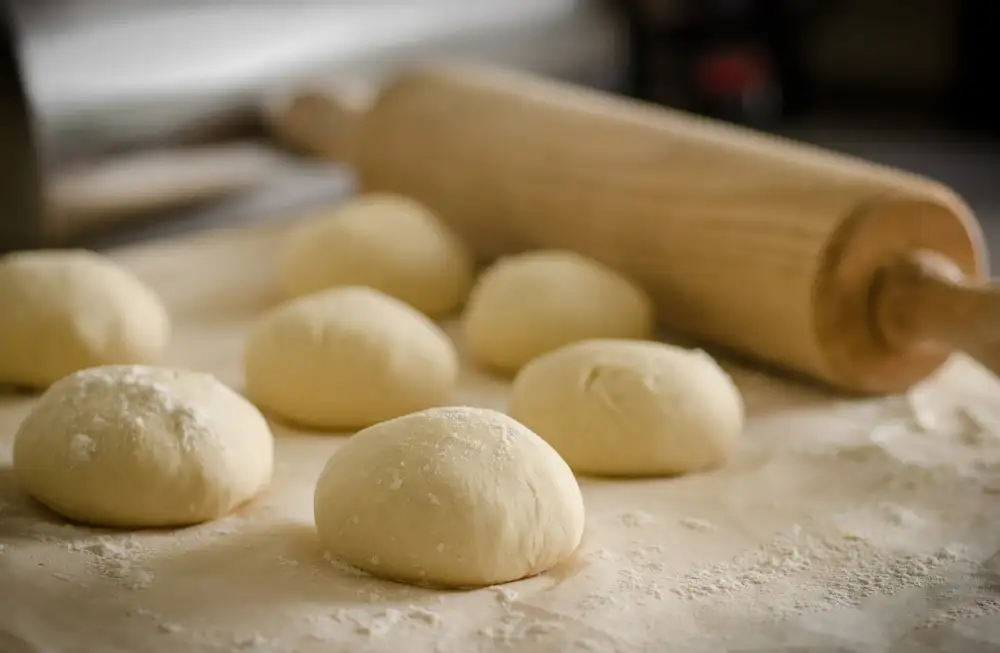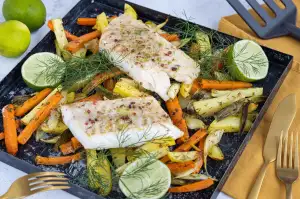Discover Delicious Low Sodium Recipes: Indulge in Healthy Flavors with Our Flavorful Creations

In today's fast-paced world, it's easy to overlook the impact of our dietary choices on our health. However, paying attention to what we eat is essential for maintaining a healthy lifestyle. One aspect that often goes unnoticed is the amount of sodium in our food. Excessive sodium intake has been linked to various health issues such as high blood pressure and heart disease. That's where low sodium recipes come into play. By reducing the amount of sodium in our meals, we can still enjoy delicious flavors while prioritizing our well-being. In this article, we will explore the benefits of low sodium diets, provide tips for reducing sodium intake, and share mouthwatering low sodium recipes for every meal of the day. So let's embark on a journey towards healthier eating without compromising on taste!
Benefits of Low Sodium Diets
Choosing to follow a low sodium diet can have numerous benefits for your overall health and well-being. By reducing your sodium intake, you can lower your risk of developing high blood pressure, heart disease, and stroke. Additionally, a low sodium diet can help to improve kidney function and reduce the risk of kidney stones. Moreover, it can also help to decrease fluid retention in the body and alleviate symptoms such as bloating and swelling. Embracing a low sodium lifestyle can lead to improved cardiovascular health, better weight management, and an overall healthier body.
Understanding Sodium Content in Food
Sodium is a mineral that is essential for our body's proper functioning, but consuming too much sodium can have negative effects on our health. It is important to understand the sodium content in the foods we eat in order to make informed choices about our diet.
Many processed and packaged foods contain high levels of sodium, as it is commonly used as a preservative and flavor enhancer. These include items such as canned soups, deli meats, and snack foods. Reading food labels can help us identify the amount of sodium in a particular product.
The recommended daily intake of sodium for adults is no more than 2,300 milligrams (mg), but ideally should be limited to 1,500 mg for individuals with certain health conditions such as high blood pressure or kidney disease. It is crucial to be aware of these guidelines when planning our meals.
Fresh fruits and vegetables are naturally low in sodium, making them an excellent choice for those looking to reduce their intake. Additionally, cooking from scratch allows us to control the amount of salt added to our dishes.
By being mindful of the sodium content in the foods we consume and making conscious choices, we can take steps towards a healthier lifestyle.
Tips for Reducing Sodium Intake
1. Read Labels: Pay attention to the sodium content listed on food labels. Choose products with lower sodium levels or opt for low-sodium alternatives.
2. Cook from Scratch: By preparing meals at home, you have control over the ingredients and can reduce the amount of salt used in recipes. Experiment with herbs, spices, and other flavor enhancers to add taste without relying on salt.
3. Limit Processed Foods: Processed foods often contain high amounts of sodium as a preservative. Minimize your intake of canned soups, frozen meals, deli meats, and packaged snacks.
4. Rinse Canned Foods: If using canned vegetables or beans, rinse them thoroughly before cooking to remove excess sodium from the canning liquid.
5. Be Mindful of Condiments: Many condiments like ketchup, soy sauce, and salad dressings are loaded with sodium. Look for low-sodium versions or make your own at home using fresh ingredients.
6. Choose Fresh Ingredients: Opt for fresh fruits, vegetables, and lean proteins instead of processed or pre-packaged options which often contain added sodium.
7. Use Alternative Seasonings: Experiment with herbs, spices, citrus juices, vinegar, and flavored oils to enhance the taste of your dishes without relying on salt.
8. Gradually Reduce Sodium: Start by gradually reducing the amount of salt you use in cooking or at the table. Over time, your taste buds will adjust to lower levels of sodium.
By following these tips and incorporating flavorful low sodium recipes into your diet, you can enjoy delicious meals while reducing your sodium intake for a healthier lifestyle.
Delicious Low Sodium Breakfast Recipes
Start your day off right with these flavorful and healthy low sodium breakfast recipes. These dishes are not only delicious but also packed with nutrients to give you the energy you need to tackle the day ahead.
1. Veggie Omelette: Whip up a tasty omelette using egg whites, spinach, mushrooms, and bell peppers. Season with herbs and spices instead of salt for a burst of flavor.
2. Overnight Chia Pudding: Mix chia seeds with almond milk, vanilla extract, and a touch of honey. Let it sit overnight in the fridge for a creamy and nutritious breakfast option.
3. Avocado Toast: Spread mashed avocado on whole grain toast and top with sliced tomatoes, a sprinkle of black pepper, and a drizzle of olive oil for a satisfying and heart-healthy meal.
4. Greek Yogurt Parfait: Layer low sodium granola, fresh berries, and Greek yogurt in a glass for a protein-packed breakfast that will keep you full until lunchtime.
5. Banana Pancakes: Mash ripe bananas and mix them with oats, eggs, cinnamon, and vanilla extract to create fluffy pancakes without any added salt or sugar.
These low sodium breakfast recipes are not only easy to make but also incredibly tasty. By embracing these delicious options, you can start your day off on the right foot while still maintaining your commitment to a low sodium lifestyle.
Flavorful Low Sodium Lunch Ideas
When it comes to lunch, it can be challenging to find flavorful options that are also low in sodium. However, with a little creativity, you can enjoy delicious lunches that are both healthy and satisfying.
One idea is to create a colorful salad using fresh vegetables and lean proteins. Start with a base of mixed greens and add cherry tomatoes, cucumbers, bell peppers, and grilled chicken or tofu. For added flavor, drizzle with a homemade vinaigrette made from olive oil, lemon juice, and herbs.
Another option is to make a hearty vegetable soup. Use low-sodium broth as the base and add your favorite vegetables such as carrots, celery, onions, and zucchini. Season with herbs like thyme or rosemary for an extra burst of flavor.
If you're looking for something more substantial, consider making a wrap or sandwich using whole grain bread or tortillas. Fill it with lean meats like turkey or chicken breast, along with plenty of fresh veggies like lettuce, tomatoes, and avocado. Skip the mayo and opt for mustard or hummus instead.
Lastly, don't forget about leftovers! Transform last night's dinner into a delicious lunch by repurposing it into a new dish. For example, use leftover grilled salmon to top a bed of mixed greens for a refreshing salad.
By incorporating these flavorful low sodium lunch ideas into your meal planning, you can enjoy tasty meals that are good for your health without sacrificing on taste.
Satisfying Low Sodium Dinner Options
When it comes to dinner, there are plenty of satisfying low sodium options to choose from. By incorporating flavorful ingredients and spices, you can create delicious meals that are not only healthy but also packed with taste.
One popular choice is grilled chicken with roasted vegetables. Season the chicken with herbs and spices like garlic powder, paprika, and thyme for added flavor. Pair it with a colorful array of roasted vegetables such as bell peppers, zucchini, and carrots. Drizzle with olive oil and sprinkle with salt-free seasoning for a tasty and nutritious meal.
Another option is baked salmon with quinoa and steamed broccoli. Season the salmon fillets with lemon juice, dill, and black pepper before baking them in the oven. Serve it alongside a side of fluffy quinoa cooked in low sodium vegetable broth and steamed broccoli seasoned with garlic powder.
For those craving a comforting dish, try making a low sodium turkey chili. Use lean ground turkey instead of beef to reduce the sodium content. Add in kidney beans, diced tomatoes, onions, bell peppers, and chili powder for a flavorful kick. Let it simmer on the stove until all the flavors meld together.
If you're in the mood for pasta, opt for whole wheat noodles tossed in a homemade marinara sauce made from fresh tomatoes, garlic, basil, and oregano. Top it off with grilled shrimp or sautéed mushrooms for added protein.
Remember to always read food labels carefully when shopping for ingredients to ensure they are low in sodium. By being mindful of your choices and getting creative in the kitchen, you can enjoy satisfying low sodium dinners without sacrificing taste or flavor.
Mouthwatering Low Sodium Snacks and Appetizers
When it comes to snacking, it's easy to reach for salty treats that are high in sodium. But fear not, because we have some delicious low sodium options that will satisfy your cravings without compromising your health.
One tasty option is homemade popcorn. Skip the pre-packaged microwave varieties and make your own using plain kernels. Season with herbs and spices like garlic powder, paprika, or nutritional yeast for a flavorful twist.
Another great choice is fresh vegetable sticks paired with a low sodium dip. Opt for hummus made with reduced salt or try a yogurt-based dip with herbs and spices. You can also make your own salsa using fresh tomatoes, onions, cilantro, and lime juice.
For those who love crunchy snacks, roasted chickpeas are a fantastic choice. Simply toss them in olive oil and season with your favorite herbs and spices before baking until crispy. They're packed with fiber and protein too!
If you're looking for something more filling, consider making mini quiches or frittatas using egg whites or low sodium cheese. Add in vegetables like spinach, mushrooms, or bell peppers for added flavor and nutrition.
Lastly, don't forget about the power of fruit as a snack or appetizer. Sliced apples paired with almond butter or grapes served with low sodium cheese cubes are both simple yet satisfying options.
By incorporating these mouthwatering low sodium snacks and appetizers into your diet, you can still enjoy delicious flavors while maintaining a healthy lifestyle. So go ahead and indulge guilt-free!
Indulgent Low Sodium Desserts
Who said you can't enjoy desserts while following a low sodium diet? We have some delicious and guilt-free options that will satisfy your sweet tooth without compromising your health goals.
1. Fruit Parfait: Layer fresh berries, sliced bananas, and low sodium yogurt in a glass. Top it off with a sprinkle of cinnamon or a drizzle of honey for added sweetness.
2. Baked Apples: Core an apple and fill the center with a mixture of chopped nuts, raisins, and a dash of cinnamon. Bake until tender for a warm and comforting treat.
3. Chocolate Avocado Mousse: Blend ripe avocados with unsweetened cocoa powder, vanilla extract, and a natural sweetener like stevia or maple syrup. Chill in the refrigerator for a creamy and decadent dessert.
4. Chia Pudding: Mix chia seeds with unsweetened almond milk, vanilla extract, and your choice of sweetener. Let it sit overnight in the fridge to thicken into a pudding-like consistency. Top with fresh fruit for added flavor.
5. Frozen Banana Ice Cream: Slice ripe bananas and freeze them until firm. Blend the frozen banana slices in a food processor until smooth and creamy. Add in flavors like cocoa powder or peanut butter for variety.
Remember to always check labels for hidden sources of sodium in ingredients such as canned fruits or sweeteners. With these indulgent low sodium desserts, you can satisfy your cravings while still maintaining a healthy lifestyle!
In conclusion, adopting a low sodium lifestyle can have numerous benefits for your health and well-being. By reducing your sodium intake, you can lower your risk of developing high blood pressure, heart disease, and other chronic conditions. Additionally, incorporating delicious low sodium recipes into your daily meals can help you discover new flavors and enjoy the natural taste of food.
Remember to read food labels carefully, choose fresh ingredients whenever possible, and experiment with herbs and spices to enhance the flavor of your dishes without relying on salt. With a little creativity and mindfulness, you can create flavorful meals that are both healthy and satisfying.
So why not start today? Join our culinary community and explore the world of delicious low sodium recipes. Indulge in healthy flavors, nourish your body, and celebrate the joy of food while taking care of your health. Together, let's embrace a low sodium lifestyle and savor every bite along the way.
Published: 05. 12. 2023
Category: Food



